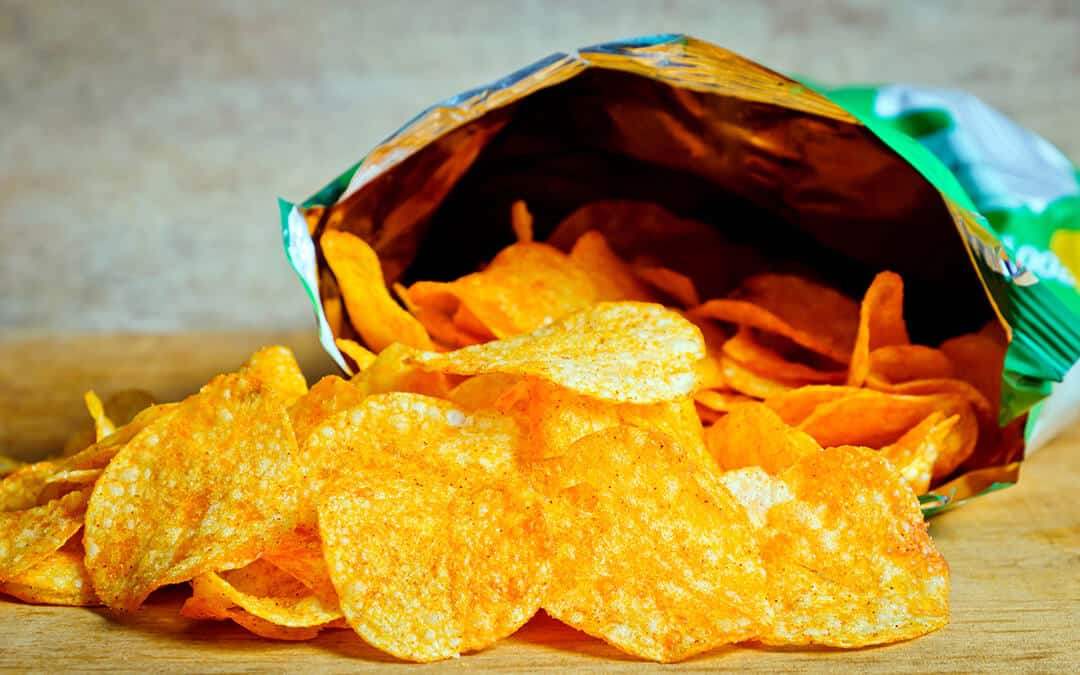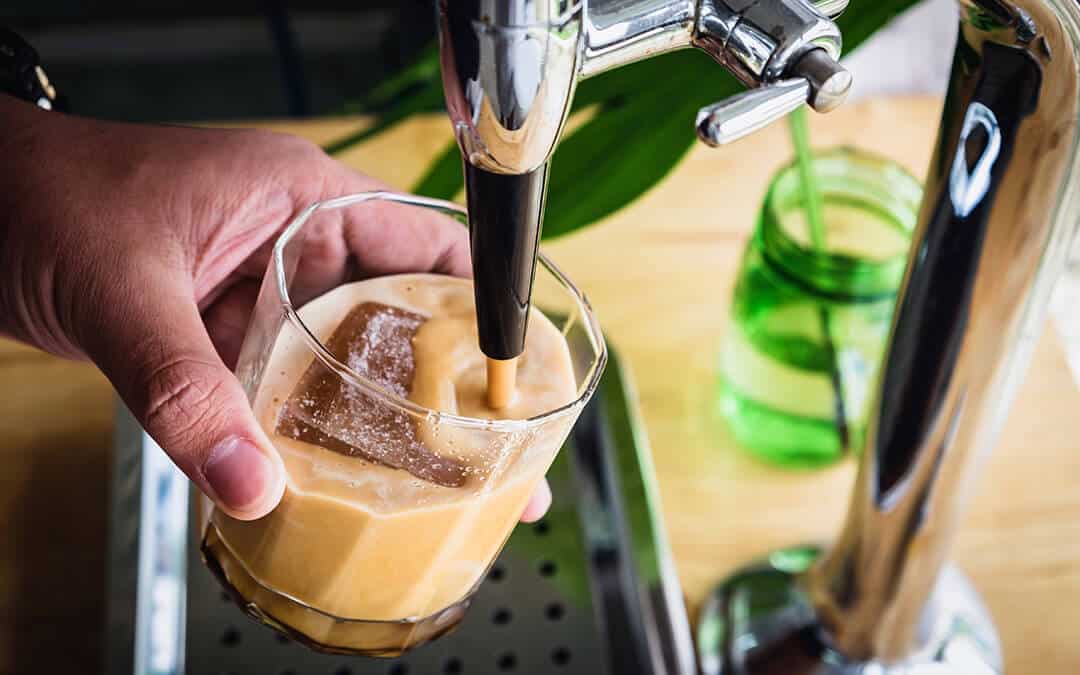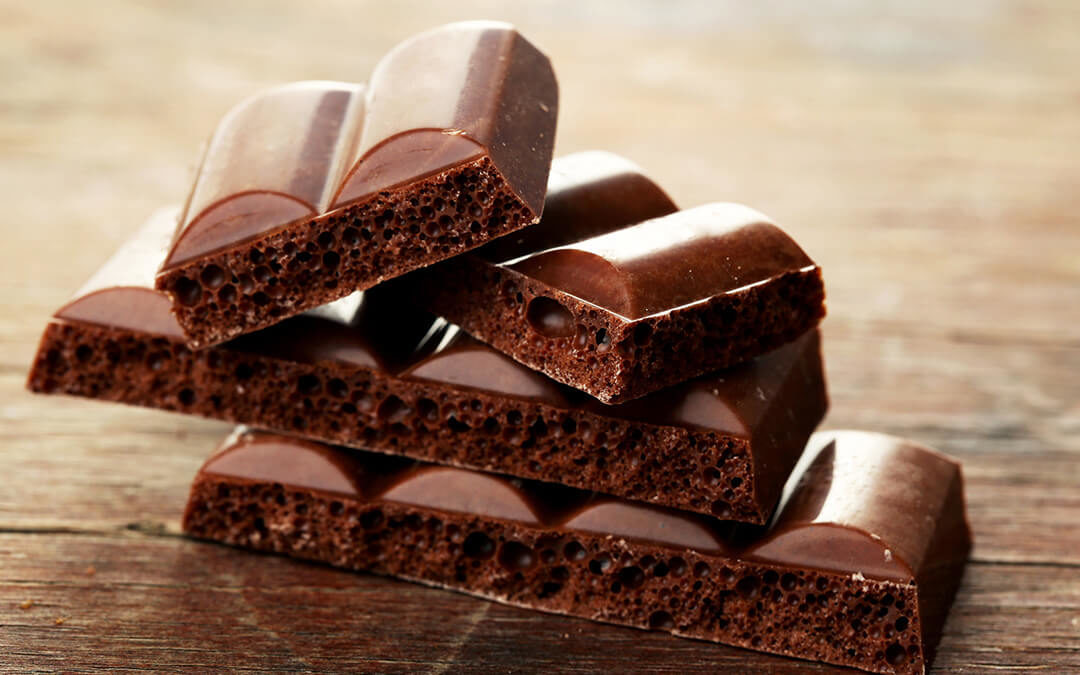From aerospace industries that use nitrogen for laser-cutting applications to medical nitrogen helping to preserve blood, tissue and other biological specimens, nitrogen gas is used in a variety of ways across many industries. As a fast freezing method and solid preservation technique, nitrogen is also seen prominently throughout the restaurant and food industries. But aside from its assistance in safely packaging food and extending shelf life, nitrogen gas lets food manufacturers create fun foods — without adding toxic ingredients.
Food Aeration
Ever wondered what fills a chip bag? Surprise — it’s not air, but nitrogen gas! At the end of the production line, nitrogen gas is added into chip bags, reducing oxidation and better preserving the chips. This gas also acts as a cushion to protect the chips from crumbling during the shipping process. So, don’t be too disappointed the next time you open a half-full bag of chips.

Aerated Chocolate
Aeration is a technique where the chocolate is mixed with nitrogen gas under pressure to produce “bubbly” chocolate. Nestlé’s Aero is perhaps the most well-known example of this aerated chocolate. Originally produced by Rowntree’s, Aero bars were introduced in 1935 as the “new chocolate.” Much lighter and lower in calories than its solid counterpart, aerated chocolate has a niche market. So if you’re looking for a light and airy treat, this one is for you.
Nitro Ice Cream
A food trend that has popped up in the dessert market is nitro ice cream. Instead of the traditional churn method, liquid nitrogen flash freezes the ice cream, so it only takes moments to make. This process results in a super fresh and more flavorful bowl of ice cream. Plus, with such a quick and easy process, nitro ice cream can be easily individualized to each person’s taste. Specialty nitro ice cream shops have popped up all across America, each offering their take on the trend. From rocky road to more creative mix-ins, nitro ice cream is the way to go.
Nitro Coffee
Coffee connoisseurs and enthusiasts have embraced nitrogen in their morning cup of Joe. Recently introduced to the coffee world and popularized by Starbucks, nitro coffee is prepared by cold brewing coffee grounds and infusing them with pressurized nitrogen gas. Using pure nitrogen gas affects the taste and texture of the coffee, making the flavor smoother and less bitter. To serve, this coffee is poured through a pressurized valve in the draft, creating a drink with a thick froth that feels almost like a cream — but without the dairy. This smooth, sweet trend of making drinks is making its way to tea, soda and more!

Nitro Beers
Similar to nitro coffee, nitro beer is prepared with nitrogen. While most beers use carbon dioxide for carbonation, nitrogen is used in beer to create smaller carbonated bubbles. Since nitrogen is hard to dissolve in liquid, it produces a frothier beer than a CO2-infused one. Nitrogen adds a creamy consistency and smoother flavors, similar to those of a traditional stout beer like Guinness. As this type of beer grows in popularity, breweries are creating their own versions of it, and bars are experimenting with it for cocktails.
For some food and beverage companies, hopping on this nitro trend makes perfect sense. With nitro, they can create an innovative product with better taste and appearance, while appealing to the sensibilities of new audiences like millennials. With a promise like that, nitro might just be the solution to your food industry needs.
Local Los Angeles companies and restaurants have trusted CalOx as the provider of their food-grade nitrogen gases, including the proper equipment and tools. From liquid-nitrogen ice cream to truly frozen cocktails and beyond, contact CalOx to help meet your food-grade nitrogen gas needs.
